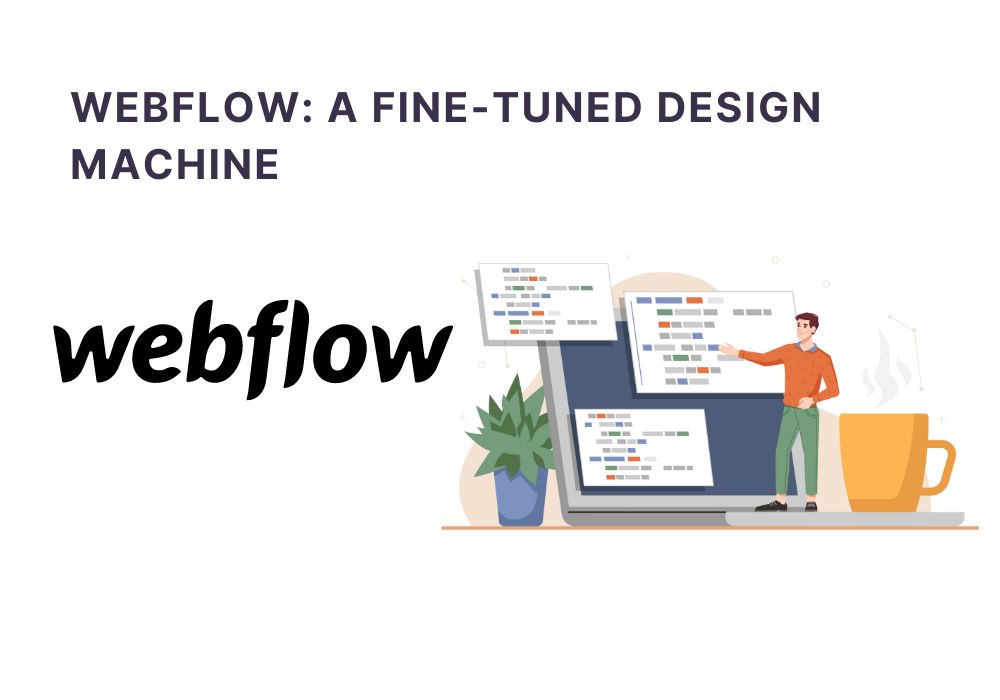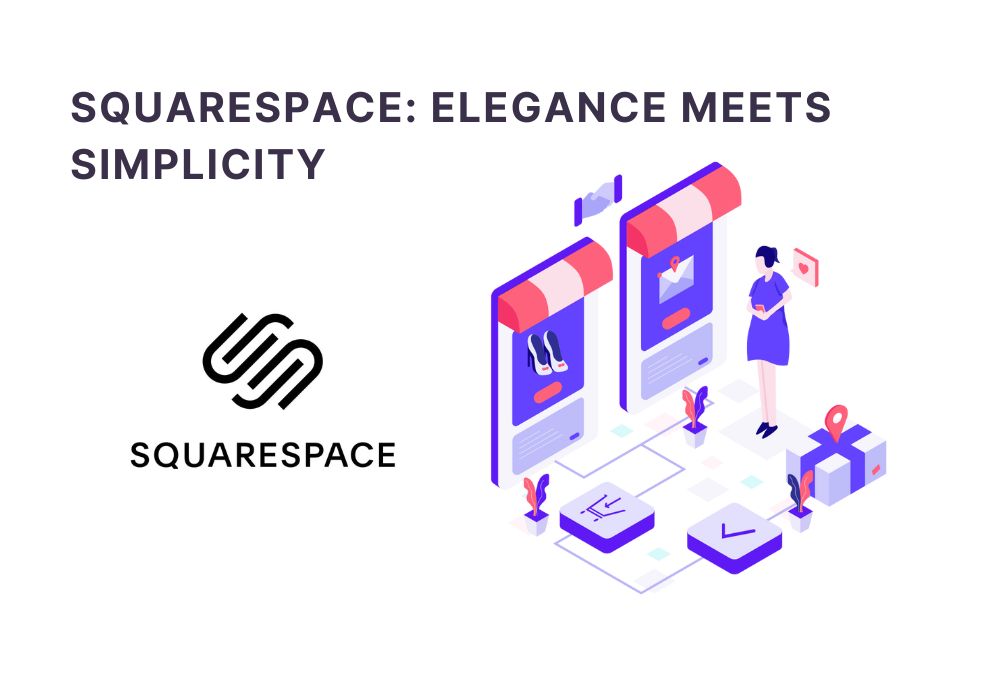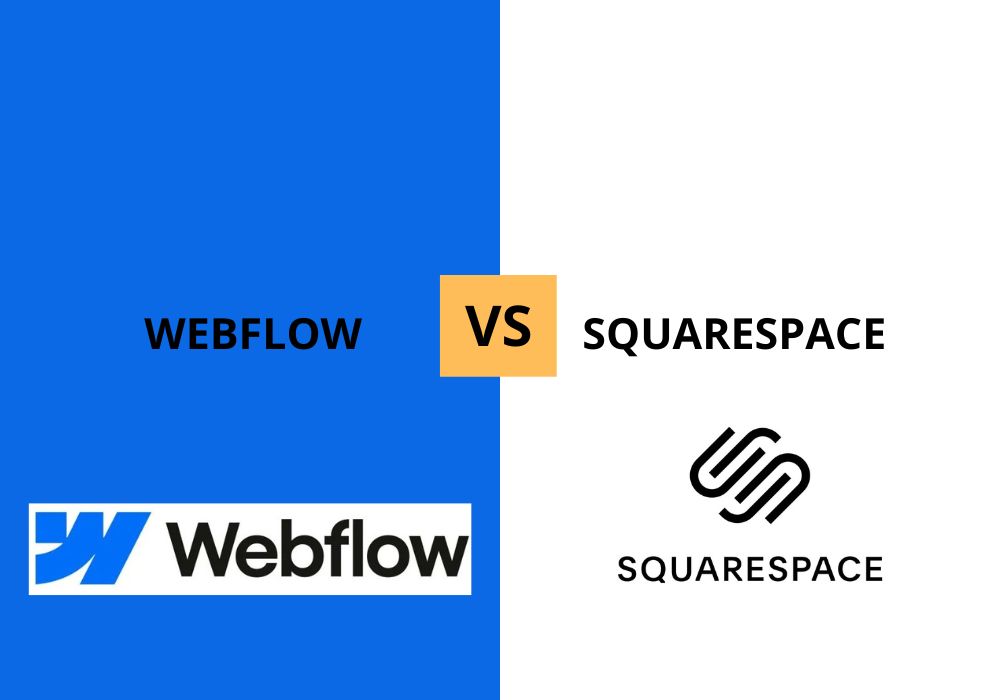Compare Webflow Vs Squarespace 2024
Compare Webflow vs Squarespace: Which website builder is right for you?
Webflow offers greater customization through its visual editor, ideal for web designers, whereas Squarespace provides user-friendly, design-centric templates suited for beginners. Deciding which platform to use depends on your design skills and needs.
Choosing the right website-building platform is crucial for the success and flexibility of your online presence. Webflow stands out for its advanced, intuitive interface that lets designers translate their visions into reality without the need for extensive coding knowledge.
Its granular control over animations and interactions appeals to developers seeking a more bespoke website. On the flip side, Squarespace wins for its array of stylish, ready-to-use templates that make it simple for entrepreneurs and creatives to launch a professional-looking site quickly.
The platform’s ease of use and comprehensive built-in features are particularly advantageous for individuals new to website creation. Both systems offer responsive design, e-commerce capabilities, and reliable hosting, but your choice hinges on the balance between ease of use and control over detailed web design.
Before reading this blog you also Choose between Shopify and Squarespace hinges on your needs; Shopify excels in e-commerce, while Squarespace shines in design and simplicity.
Webflow Vs Squarespace: Core Differences
Both Webflow and Squarespace are popular website-building platforms, but they cater to slightly different needs and preferences. Here’s a comparison table to help you decide which one suits you best:
| Feature | Webflow | Squarespace |
|---|---|---|
| Ease of Use | Moderate learning curve, more design freedom | User-friendly, intuitive interface |
| Design Flexibility | Highly customizable, extensive design control | Templates with some customization options |
| Code Control | Full control over HTML, CSS, and JavaScript | Limited access to code, more WYSIWYG |
| E-commerce | Supports e-commerce with various integrations | Built-in e-commerce functionality |
| Hosting | Hosted on Webflow servers | Hosted on Squarespace servers |
| Pricing | Offers free and paid plans | Paid plans with varying features and pricing |
| Support | Extensive documentation and community support | 24/7 customer support |
Ultimately, the choice between Webflow and Squarespace depends on your specific needs, preferences, and technical expertise. If you value design flexibility and are comfortable with some technical aspects, Webflow might be the better choice. On the other hand, if you prefer simplicity and want built-in e-commerce functionality, Squarespace could be the more suitable option.
Webflow: A Fine-tuned Design Machine
Webflow stands out for its visual development tools. Designers enjoy precise control over their creations. The platform caters to professional designers looking for a powerful canvas.

Users can tap into advanced customization options. This includes CSS, HTML, and JavaScript. These features are perfect for those needing highly-tailored websites. Webflow offers detailed layout adjustments without writing code.
Squarespace: Elegance Meets Simplicity
Squarespace shines with its streamlined, intuitive interface. It’s a platform where creativity flows with ease. Designing a website feels natural and effortless, even for beginners.

Users find a treasure of built-in tools tailored for artists and entrepreneurs. These tools help craft stunning portfolios, online stores, and professional blogs. The blend of style and functionality makes Squarespace unique.
Feature-by-feature Comparison of Webflow Vs Squarespace
Webflow Vs Squarespace both offer diverse template options. Yet, Webflow shines with its high customizability. Users can tweak templates to their exact needs. Squarespace, while more limited, provides elegantly designed templates that are easy to use for beginners.
Moving on to e-commerce, Webflow’s flexibility stands out again. Users have fine-grain control over their storefronts. This allows for a tailored shopping experience. On the other hand, Squarespace simplifies the process with built-in tools. These are more than sufficient for small to medium-sized shops. It offers a user-friendly solution with fewer complexities.
| Feature | Webflow | Squarespace |
|---|---|---|
| Template Customization | Highly customizable | Less customizable, user-friendly |
| E-Commerce Control | Detailed store customization | Simplified e-commerce tools |
Pricing And Plans: Webflow Vs Squarespace
Webflow Vs Squarespace offers distinct pricing tiers to fit various needs. Webflow’s plans range from basic options suitable for personal projects to advanced tiers aimed at large-scale businesses. These tiers scale up in price and features, offering increased customization and integration capabilities.
Squarespace simplifies its offerings into fewer plans, highlighting ease of use and out-of-the-box functionality. Each upgrade enhances aesthetic flexibility and adds e-commerce tools. Subscribers need to assess whether the cost aligns with the actual value received from these added features.
| Webflow Plan | Features | Price |
|---|---|---|
| Basic | Limited pages, CMS | Starts at $12 |
| Business | Full CMS, Site Search | Starts at $36 |
| Enterprise | Custom features, Support | Contact for price |
Prospective users must weigh the investment against the return on these tools. Prioritizing essential features while staying within budget remains key. Deciding between Webflow and Squarespace hinges on individual project goals and the required level of customization.
Real-world Use Cases And Testimonials
Webflow shines in bespoke design flexibility. With Webflow, a tech company transformed its brand. They created a unique, interactive website. Users love the tailor-made animations and responsive elements. This was key for standing out online.
Squarespace offered a local bakery a quick solution. They built a beautiful online store fast. Easy templates made setup simple. The bakery saw a spike in online orders. Customers enjoyed the smooth shopping experience.
Both platforms boast solid community support. Designers and business owners share tips in forums. User feedback highlights Webflow’s comprehensive resources. Squarespace is praised for its approachable learning curve.
Which Suits You Best? Webflow Vs Squarespace
Choosing between Webflow and Squarespace hinges on your unique business needs. Webflow’s robust customization options excel for those requiring unique designs. It’s ideal for web designers aiming to push creative boundaries without heavy coding.
Conversely, Squarespace offers simplicity and ease of use but with less customization flexibility. It is perfect for entrepreneurs wanting a beautiful website quickly and easily. Their templates provide an easy way to get a professional look.
For long-term flexibility, Webflow may edge out as it allows for more complex interactions and integrations. Keeping your website current is simpler with its advanced features. Squarespace, while easier to use, may have limitations in integrating future technologies or adapting to complex needs.
Conclusions
Deciding between Webflow and Squarespace hinges on your needs. Webflow excels in customization and control, suited for designers craving creative freedom. Squarespace offers simplicity and beautiful templates for those prioritizing ease and speed. Both platforms empower users to build impressive websites.
Your unique project requirements will guide your choice of the ideal website builder for your online journey.







